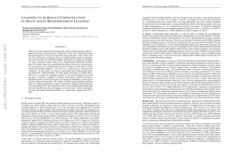On Architectures for Including Visual Information in Neural Language Models for Image Description
A neural language model can be conditioned into generating descriptions for images by providing visual information apart from the sentence prefix. This visual information can be included into the language model through different points of entry resulting in different neural architectures. We identify four main architectures which we call init-inject, pre-inject, par-inject, and merge. We analyse these four architectures and conclude that the best performing one is init-inject, which is when the visual information is injected into the initial state of the recurrent neural network. We confirm this using both automatic evaluation measures and human annotation. We then analyse how much influence the images have on each architecture. This is done by measuring how different the output probabilities of a model are when a partial sentence is combined with a completely different image from the one it is meant to be combined with. We find that init-inject tends to quickly become less influenced by the image as more words are generated. A different architecture called merge, which is when the visual information is merged with the recurrent neural network's hidden state vector prior to output, loses visual influence much more slowly, suggesting that it would work better for generating longer sentences. We also observe that the merge architecture can have its recurrent neural network pre-trained in a text-only language model (transfer learning) rather than be initialised randomly as usual. This results in even better performance than the other architectures, provided that the source language model is not too good at language modelling or it will overspecialise and be less effective at image description generation. Our work opens up new avenues of research in neural architectures, explainable AI, and transfer learning.
PDF Abstract


